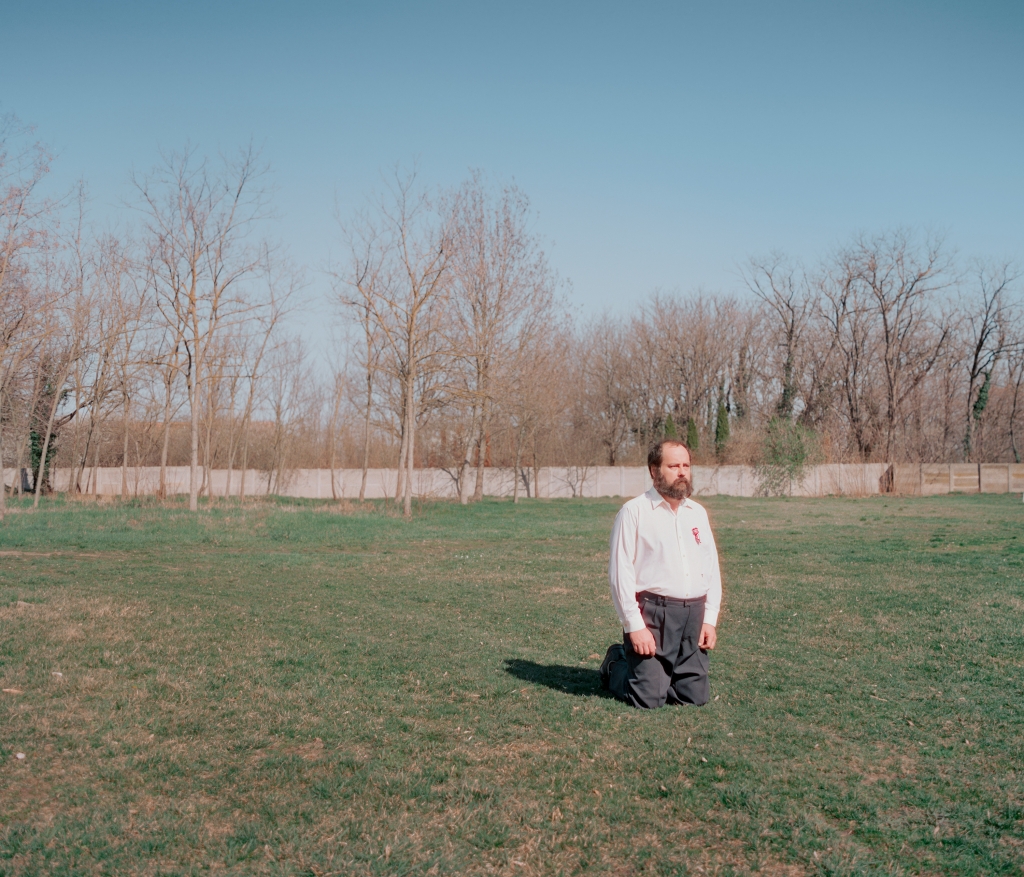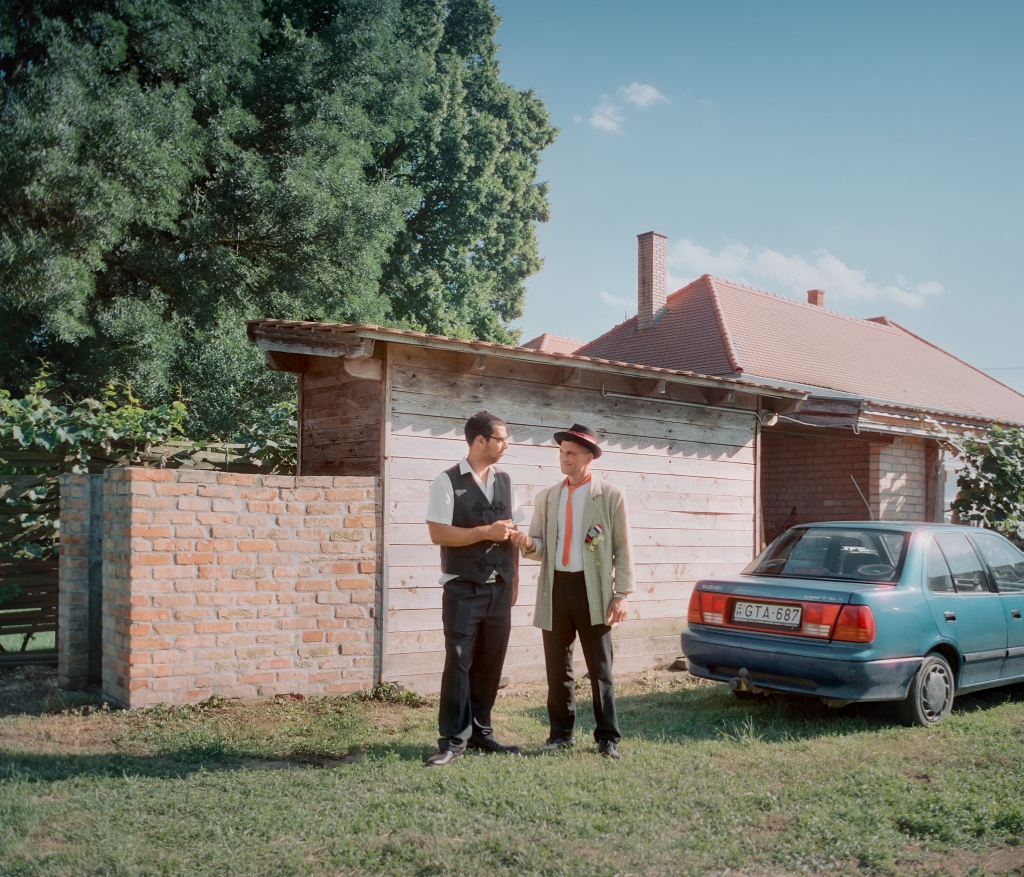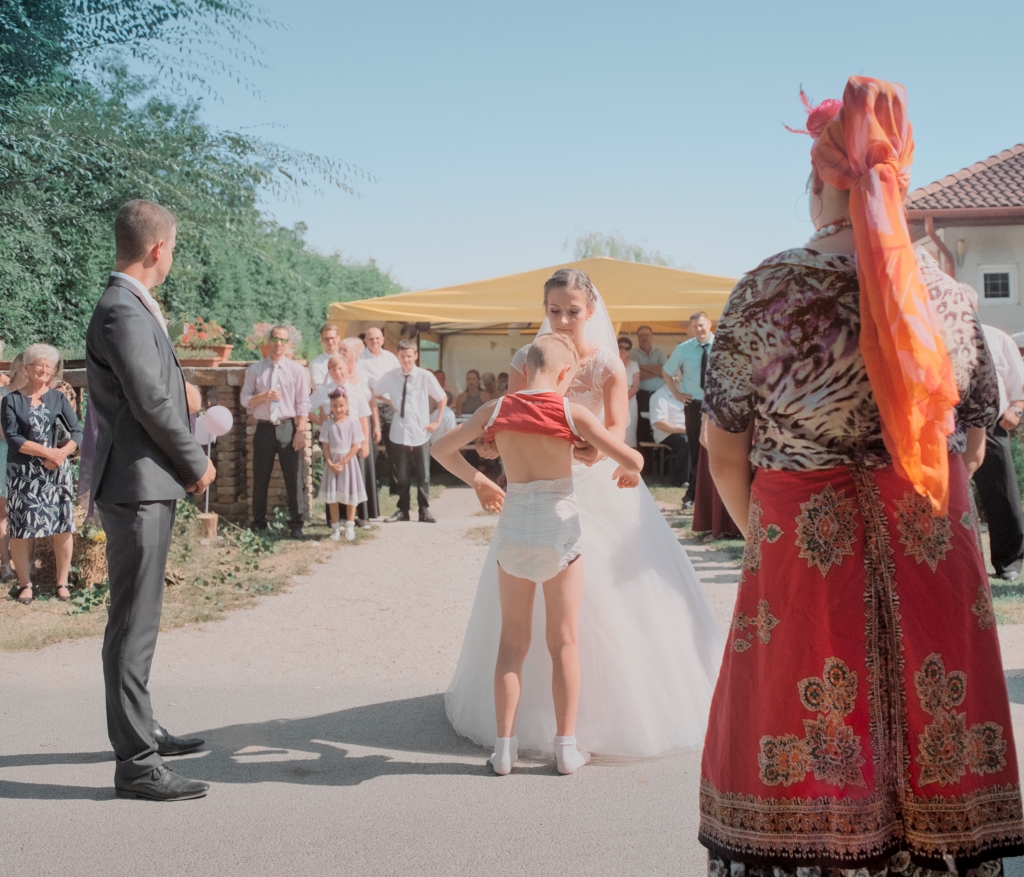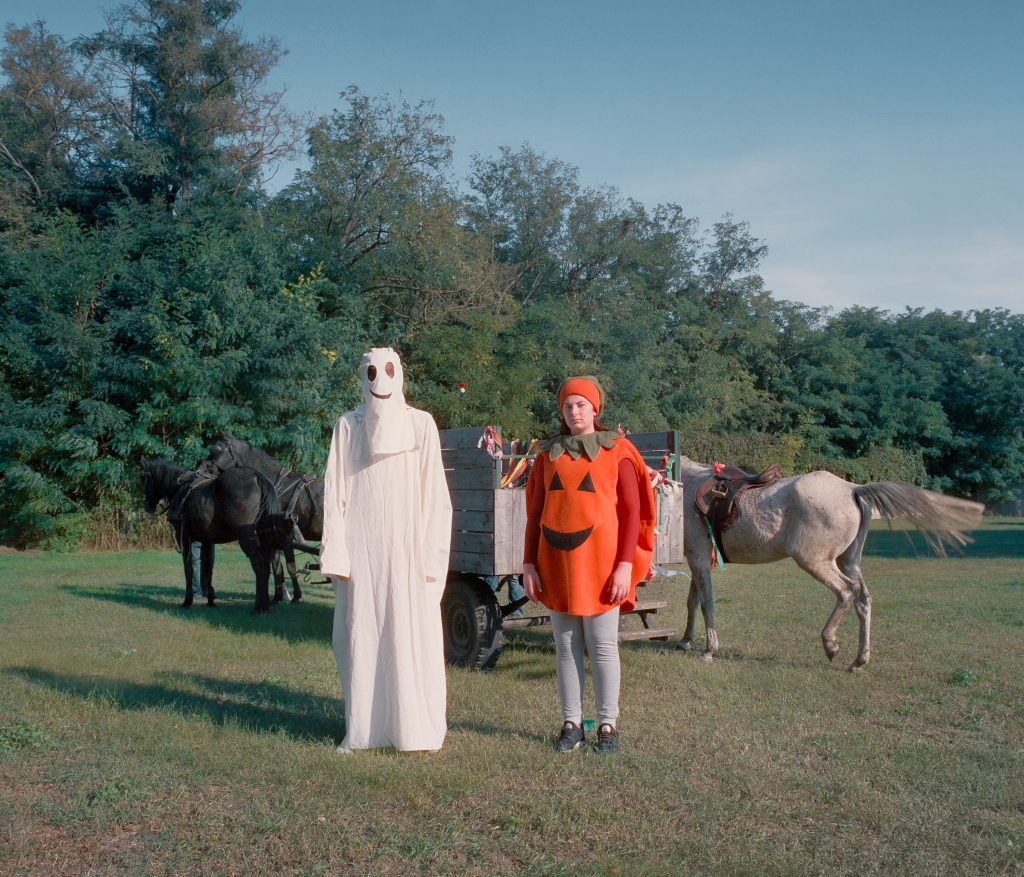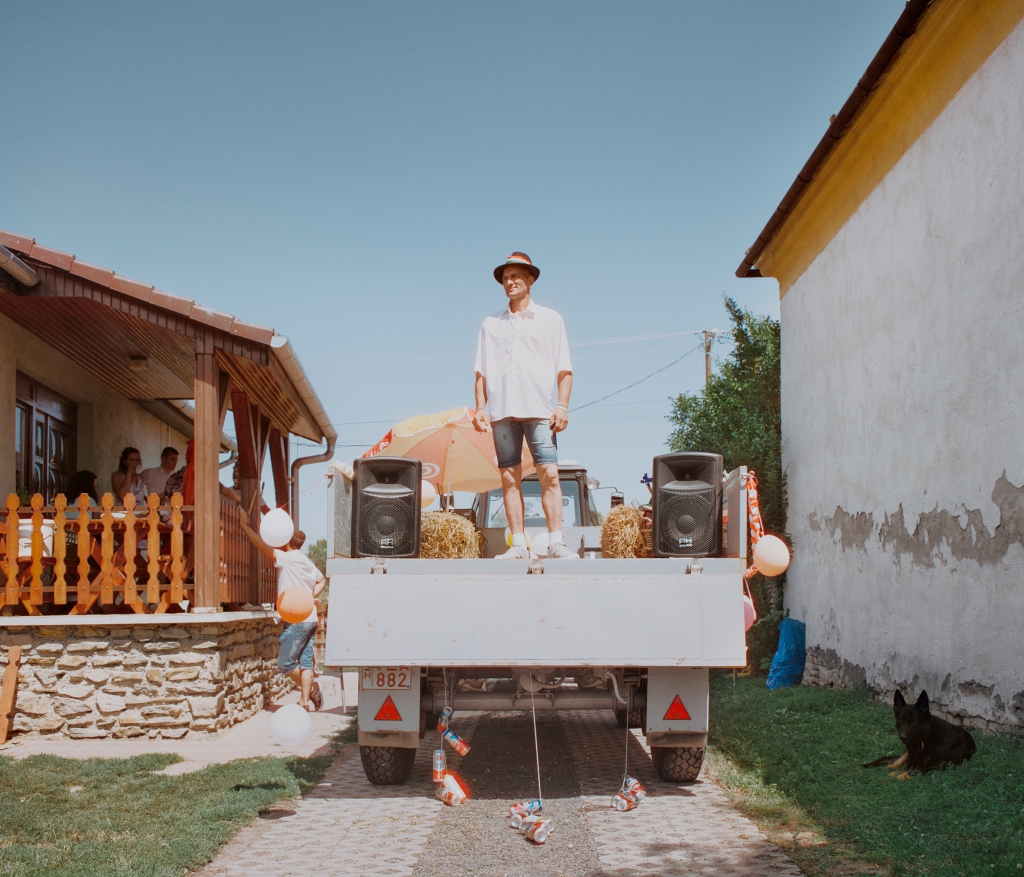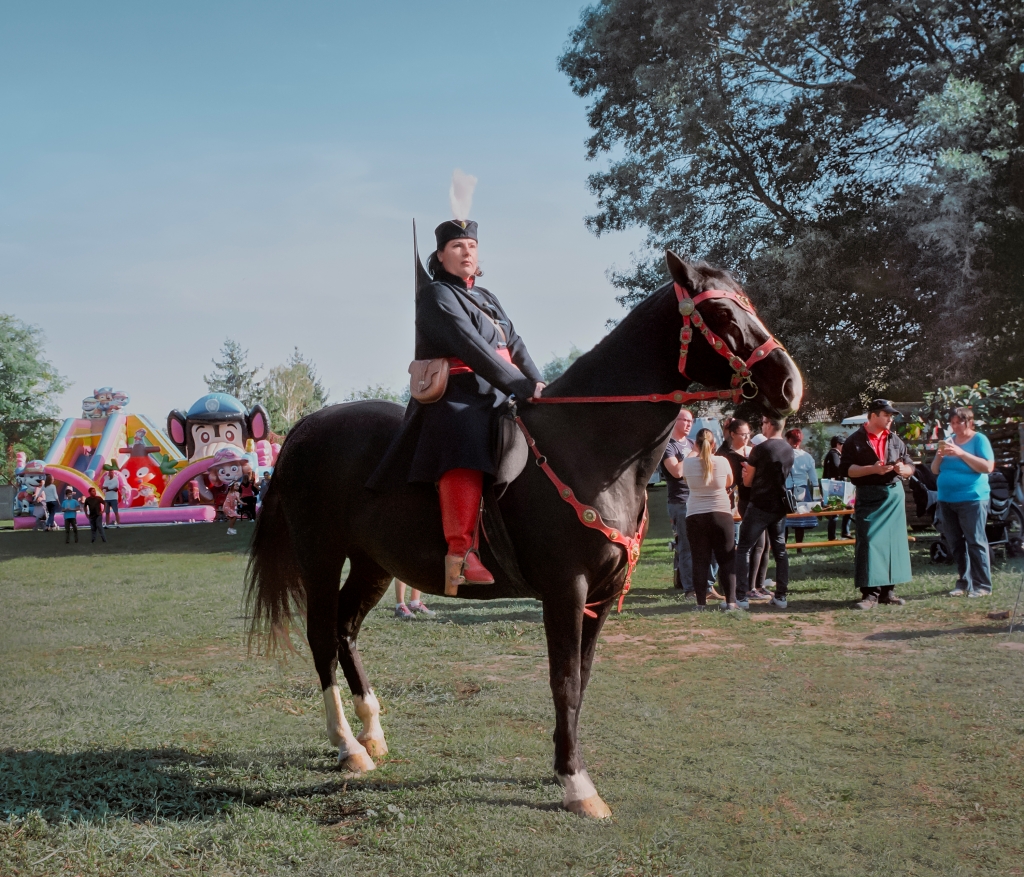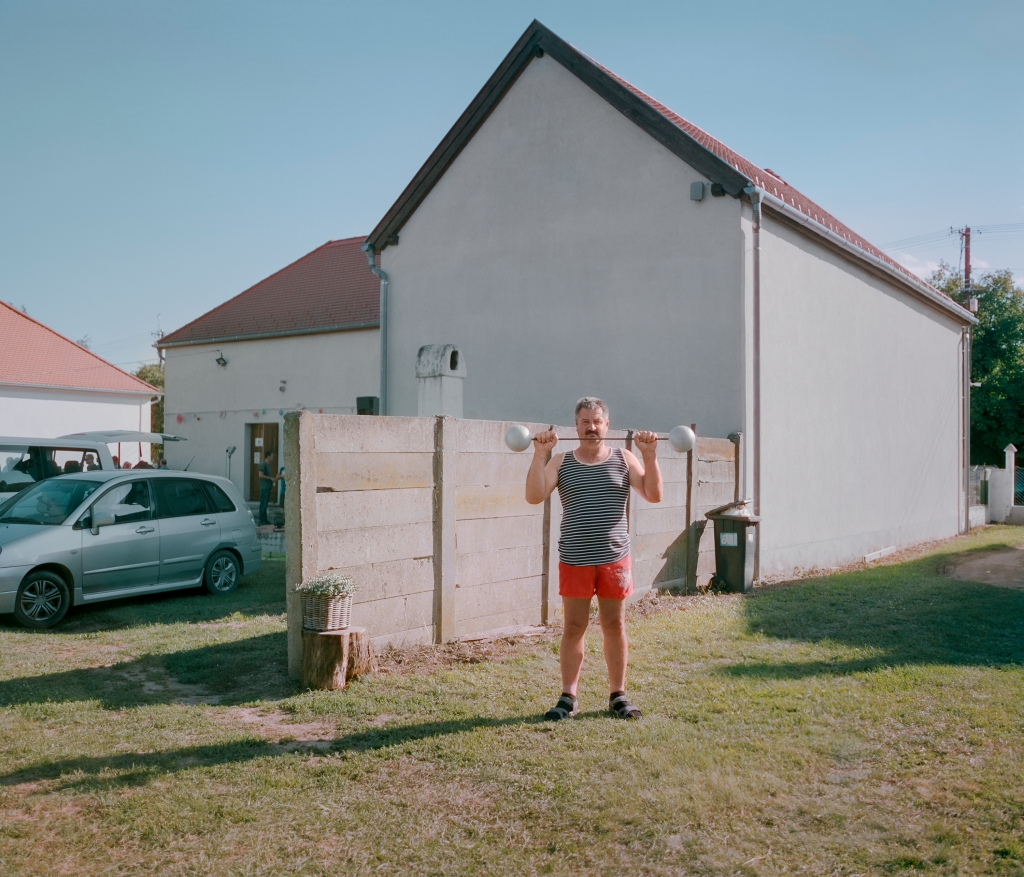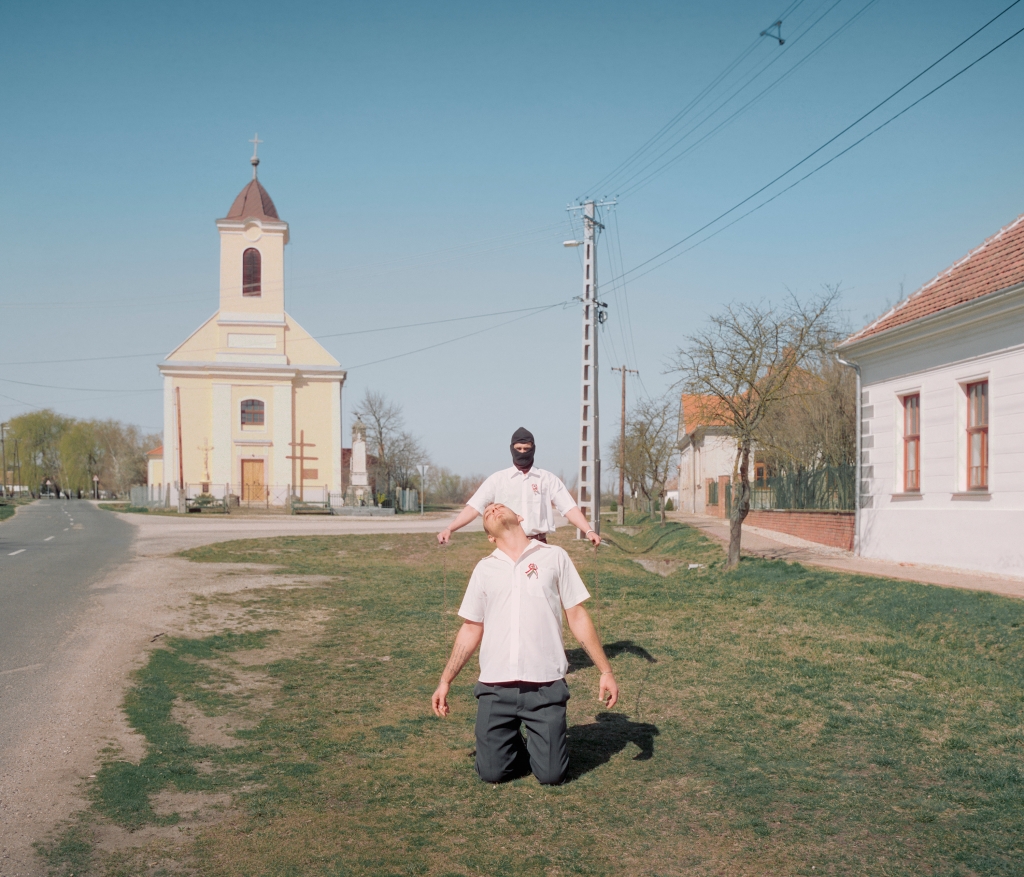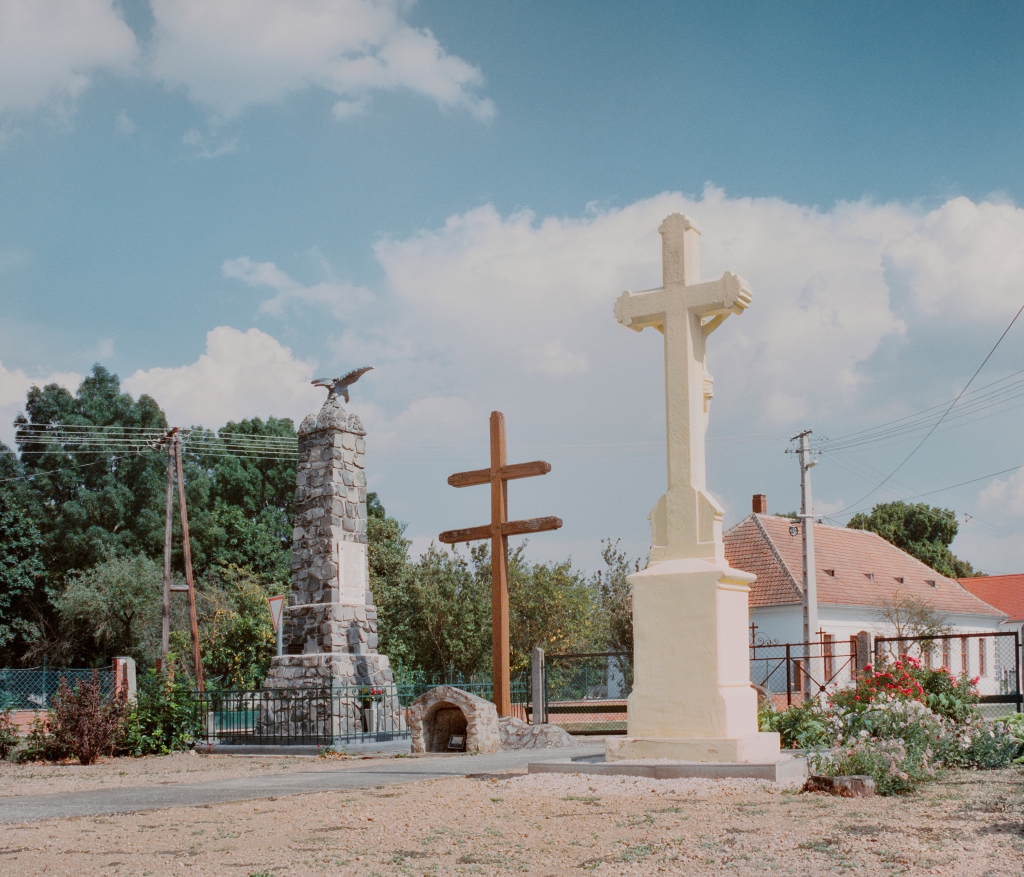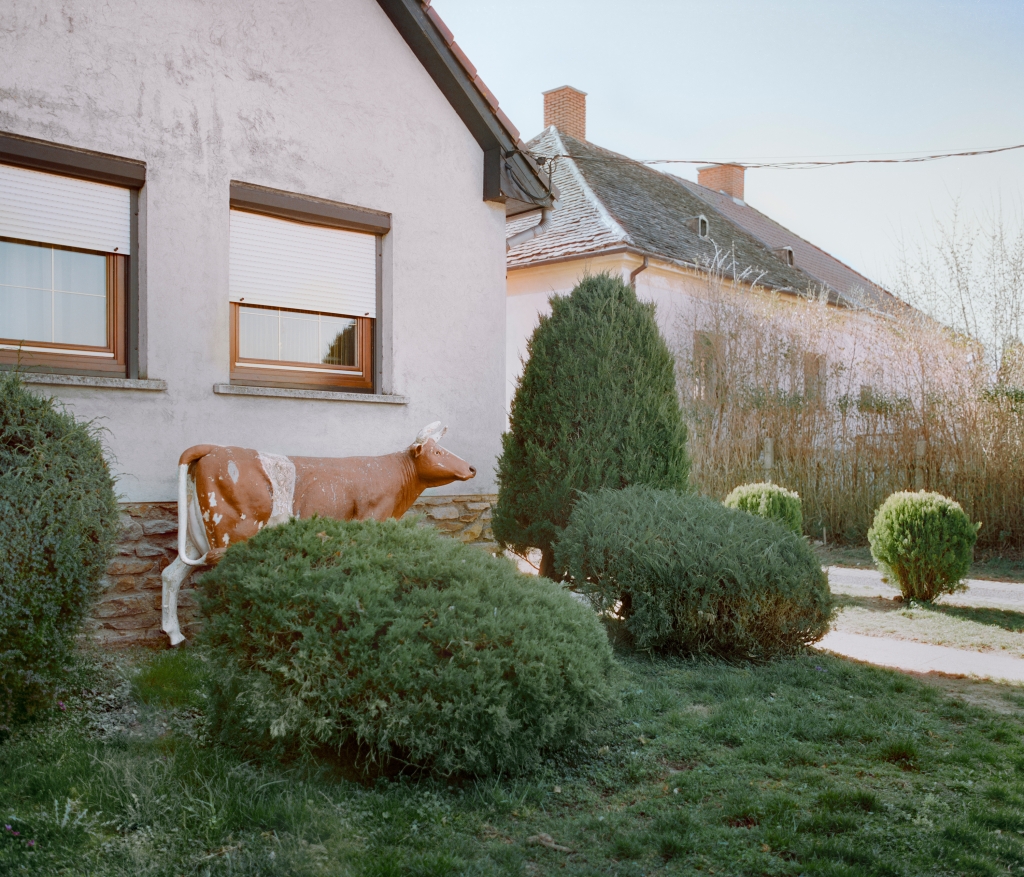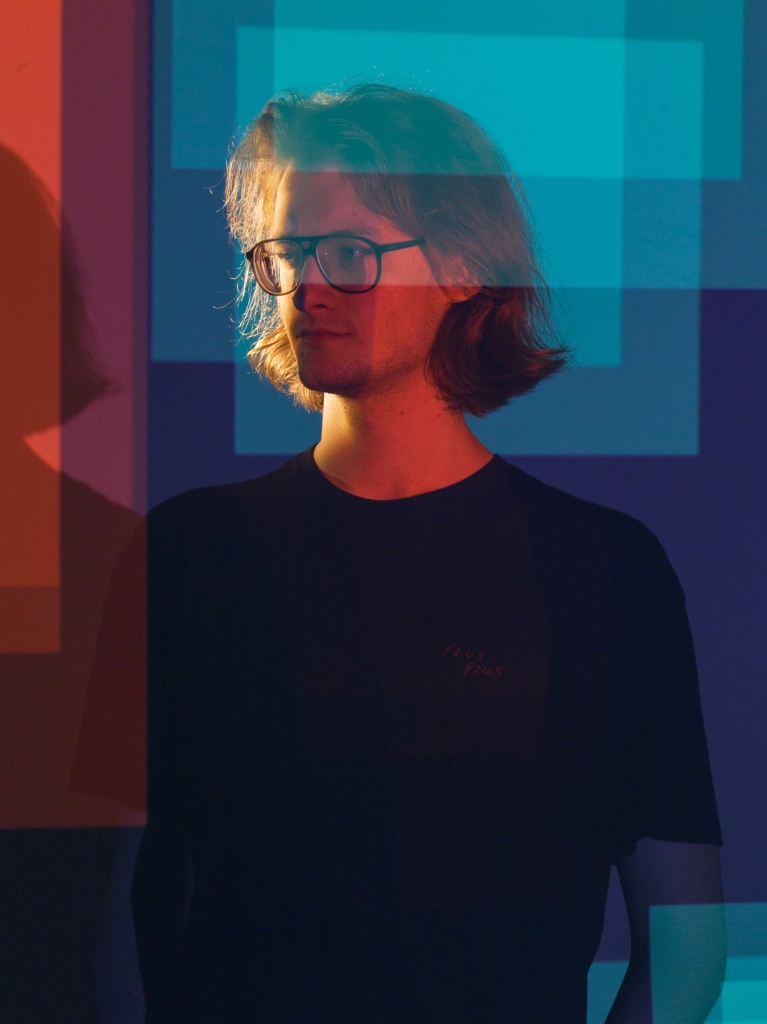
Fotográfia MA
Tóth Tamás Richárd
témavezető
Máté Gábor
konzulens
Kudász Gábor Arion
szakdolgozati konzulens
Babarczy Eszter
mestermunka
Emlékmű
Répceszemere maga a magyar vidék esszenciája. Egy tipikus, a térképről lassacskán eltűnő, keserédes miliőjű falu. Magán hordozza a rurális hagyományokat, a parasztság munkássá válásának nyomait, a rendszerváltás utáni korszak vidékértelmezéseit, az agrárjelleget, a turizmus-ipart és a magányt. A vidéket járva ezek egyfajta hibrid nosztalgiában öltenek testet, amit a lokális emlékezetpolitika az urbánusok példáját követve emlékművekbe sűrűsít.
A település az egyre növekvő elvándorlás és a tősgyökeres családok lassú kihalása következtében a környező falvakkal való összeolvasztás, azaz az önálló helységként való megszűnés határára sodródott. Répceszemere vezetése ezt elkerülendő, emléktábla avatásokkal, történelmi épületek renoválásával, illetve falumúzeum alapításával próbálja identitását nem csupán megőrizni, hanem meg is alkotni.
A polgármester munkájával párhuzamosan, de attól függetlenül megalakult egy színjátszó társulat, amelynek tagjai jelenes napokon varieté műsorokat adnak elő a falu lakói számára. A színpadon lejátszódó rejtélyes, abszurd és gyakran vicces jelenetek egy különböző, hol valós, hol vágyott, hol kölcsönvett emlékekből kollázsolt múltat idéznek meg. Az ebből általuk kiragadott jelenetek a fényképeken válnak a „szemereiség” mítoszának emlékműivé.
A település az egyre növekvő elvándorlás és a tősgyökeres családok lassú kihalása következtében a környező falvakkal való összeolvasztás, azaz az önálló helységként való megszűnés határára sodródott. Répceszemere vezetése ezt elkerülendő, emléktábla avatásokkal, történelmi épületek renoválásával, illetve falumúzeum alapításával próbálja identitását nem csupán megőrizni, hanem meg is alkotni.
A polgármester munkájával párhuzamosan, de attól függetlenül megalakult egy színjátszó társulat, amelynek tagjai jelenes napokon varieté műsorokat adnak elő a falu lakói számára. A színpadon lejátszódó rejtélyes, abszurd és gyakran vicces jelenetek egy különböző, hol valós, hol vágyott, hol kölcsönvett emlékekből kollázsolt múltat idéznek meg. Az ebből általuk kiragadott jelenetek a fényképeken válnak a „szemereiség” mítoszának emlékműivé.
szakdolgozat
A fénykép szerepe a XX. századi Magyarország korszakváltó eseményeinek megítélésében
Az elmúlt két évszázad alatt a történetírás és a fotográfia hitelességéről hasonló értelmezések fogalmazódtak meg. A régmúlt eseményeit feltáró történész szubjektuma hasonlóképpen szövődik bele az általa vizsgált esemény leírásába, mint ahogyan a fényképész is szelektál a látvány leképezésének pillanatában. Technikai jellegéből fakadó pontossága, – látszólagos – őszintesége az, ami a fényképet a tudomány szolgálatába állította. Azonban gyakran elfelejtődik készítőjének befolyásoló szerepe a fénykép teljes (feltételezett) valósággá szélesítő értelmezése során. Dolgozatomban a fenti összefüggésben három történelmi esemény fotográfiai interpretációját vizsgáltam. Az első ezek közül az 1921-es soproni népszavazás volt, melynek idejéből fennmaradt egyetlen hazai fotóalbum a magyar virtus, ellenállás, szabadságküzdelem, bajtársiasság narratíváját közvetíti. Ezen népszerű motívumokban rejlő ereje háttérbe szorítja a sorsfordító politikai tárgyalásokról készült (csekély számú) fényképes dokumentumot, téves következtetéseket, ezáltal zavart előidézve az emlékezésben. Az 1921-es, és a dolgozat többi történelmi eseménnyel foglalkozó fejezetével kapcsolatban is elmondható, hogy a magyar huszadik század korszakváltó eseményeinek fényképeken megmaradt reprezentációja egy viszonylag szűken szelektált, jól ismert archívumból építkezik. Az 1956-os forradalom mára kialakult emlékezete a felkelők hősiességét, bátorságát, áldozat vállalását, valamit az elnyomó állam kegyetlenségeit bemutató fotókara épül. Narratívája ezáltal egyoldalúvá szűkül, leegyszerűsítve az ennél sok szempontból árnyaltabb valóságot. A köztársaság téri ostrom, a brutális közelharc és a lincselések kegyetlenségét bemutató képsorok kikoptak az októberi eseményeket itthon felelevenítő riportképek sorából. A szégyenteljes képsorok egész egyszerűen nem férnek bele a rendszerváltás után kialakult hősies és tragikus emlékekből táplálkozó nemzeti mitológiánkba. A félmúltra (1956) is igaz, a közelmúlt eseményeire azonban még inkább, hogy azok főbb szereplői (legyen szó személyekről, vagy politikai érdekcsoportokról, irányzatokról) továbbra is cselekvő résztvevői a politikai életnek. Ebből adódóan a politika ágensei az 1989-es magyarországi rendszerváltás kordokumentumai között válogatva a számukra kedvezőket emelik ki, míg minden másról igyekeznek említést sem tenni, vagy akár elhalványítani azok jelentőségét. Dolgozatomban a fénykép és a történelmi rekonstrukció viszonyát vizsgálom e három (részben korszakváltó) hazai eseményen keresztül. Ennek során a fényképet, mint forrást felhasználó, illetve azt középpontba helyező történetírói narratívákat, valamint az azokra rakódó (szelektáló és gyakran irányító) emlékezetpolitika kapcsolatát is igyekszem felvázolni.
